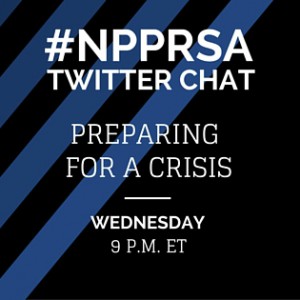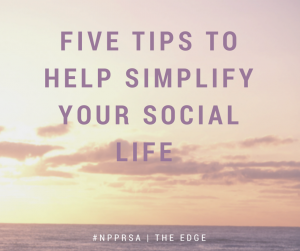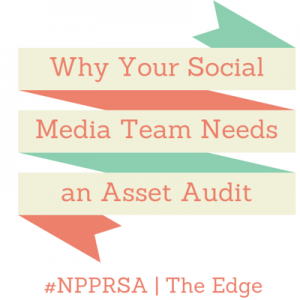 Editor’s note: This is the second post in our monthly #ThrowbackThursday series, which features a prominent, successful PR pro taking a look back and sharing tips from his/her days as a new pro.
Editor’s note: This is the second post in our monthly #ThrowbackThursday series, which features a prominent, successful PR pro taking a look back and sharing tips from his/her days as a new pro.
Are you following Heather Whaling on social media? You should be. Consistently making her way onto “Best PR Pros You Should be Following” lists on PR News , Cision and The Muse – just to name a few – Heather is making her mark on the social media industry.
She’s the president and founder of Geben Communication in Columbus, Ohio, co-moderator of the weekly social media #pr20chat Twitter chat and runs one of the most popular social media blogs in the industry – prTini.
As an admired professional in the social media industry, we take a look at Heather’s thoughts on her early beginnings (MySpace!) and how she’s not only kept up, but thrived, within the ever-changing industry.
Question 1: What were the first social media platforms you ever used, whether for personal or professional use? How did you predict these channels would develop?
If we’re not counting things like AOL Chatrooms, then my first social platform – in terms of how we think about social now – was MySpace. I hadn’t totally bought into social, so my friends actually created my MySpace profile for me.
Who knew I’d be dragged into MySpace and then go on to make a career out of helping brands excel in a social world!
Question 2: How did you stay knowledgeable and updated on the fast-paced world of social media as a young professional?
When I first started incorporating social media as an extension of PR, I was the director of PR for an agency in Orlando. They gave me a lot of freedom to research and experiment. After we did some internal testing and iterating, we offered our services pro bono to a few nonprofits.
We learned a lot and those nonprofits were seen as early adopters and maximized the benefits of being “first” in their market. Learning by doing is incredibly helpful (Click to Tweet!).
Then and now, I try to read as much as possible. I also carefully curate Twitter lists to help me find really great content that I may otherwise miss.
Question 3: As a young professional, how did you work with clients or brands that were resistant to new social media and digital trends?
When you pitch an amazing idea to a client, it’s tough to stay energized and engaged if the client shoots down the idea.
But, instead of getting frustrated, take a step back and try to understand WHY the client is resistant. Once you understand the apprehension, then you can develop a way to get them on board.
You may need to start small – perhaps a pilot program – before they’re ready to go all-in on a social/digital strategy. Stay focused on the big picture goals. Help them understand how this social thing you’re proposing will help them achieve the goals they’ve already prioritized.
It can also be helpful to present skeptical clients with research or case studies that show how similar companies approach social and the value it provides their organization.
Question 4: What has been your most memorable campaign or program that has embodied effective social media strategy?
At Geben, we’ve had the opportunity to develop and implement a number of social media campaigns. That said, I still think the best efforts integrate traditional and digital PR to maximize the value and outcomes, but I digress …
Here are a few of my favorite campaigns (with case studies if you want to learn more details!)
Question 5: If you could go back five years and tell yourself anything about the way social media would transform the communications industry, what would it be?
I started my company just over five years ago, making a big bet on the fact that social media would radically transform PR and open new doors for a fresh approach to traditional PR best practices. Thankfully, I made the right bet!
Looking back, I’d tell myself to get ready to meet some of the nicest, most helpful people. I’m always amazed at how the people I’ve met through Twitter and other social channels are so willing to make introductions, send you new business leads and generally root for you.
The social community’s generosity is incredible. I’d also tell myself to hang on for a wild ride and to embrace the crazy ( — one of our House Rules!)
More about Heather:
As president of Geben Communication, Heather Whaling (aka @prTini) leads new business development and client strategy. An avid Twitter user, Heather can trace 75% of Geben’s business back to relationships that began online. This ability to turn social networking into business outcomes has helped Geben evolve into a highly respected, sought-after, award-winning PR firm. In addition to helping clients secure coverage in a range of high-profile media outlets – from the New York Times and Wall Street Journal … to Huffington Post and TechCrunch – Heather has been quoted in Inc.com, Entrepreneur and BusinessWeek about technology’s impact on communication and business.
Heather was selected as one of Columbus Business First’s “Forty Under 40” and named one of Columbus’s top 10 entrepreneurs by The Metropreneur. She also serves on the Board of Directors for The Women’s Fund of Central Ohio.
Heather was one of five women bloggers to join Fairwinds Trading and Macy’s in Haiti in March 2010 to learn about the “Heart of Haiti” economic development initiative. She was also one of three social media correspondents selected by Outback Steakhouse to document the 2012 Outback Bowl via social media.
 We’d like to thank everyone who participated in the March #NPPRSA Twitter chat as we discussed crisis communications–how to prepare and how to react. We would especially like to thank Jonathan Bernstein, President of Bernstein Crisis Management.
We’d like to thank everyone who participated in the March #NPPRSA Twitter chat as we discussed crisis communications–how to prepare and how to react. We would especially like to thank Jonathan Bernstein, President of Bernstein Crisis Management. Lauren Rosenbaum is the PRSA New Professionals Social Media Co-Chair and Co-Founder of Soversity, a public relations and digital marketing company. You can connect with her on Google+, LinkedIn or Twitter.
Lauren Rosenbaum is the PRSA New Professionals Social Media Co-Chair and Co-Founder of Soversity, a public relations and digital marketing company. You can connect with her on Google+, LinkedIn or Twitter.






